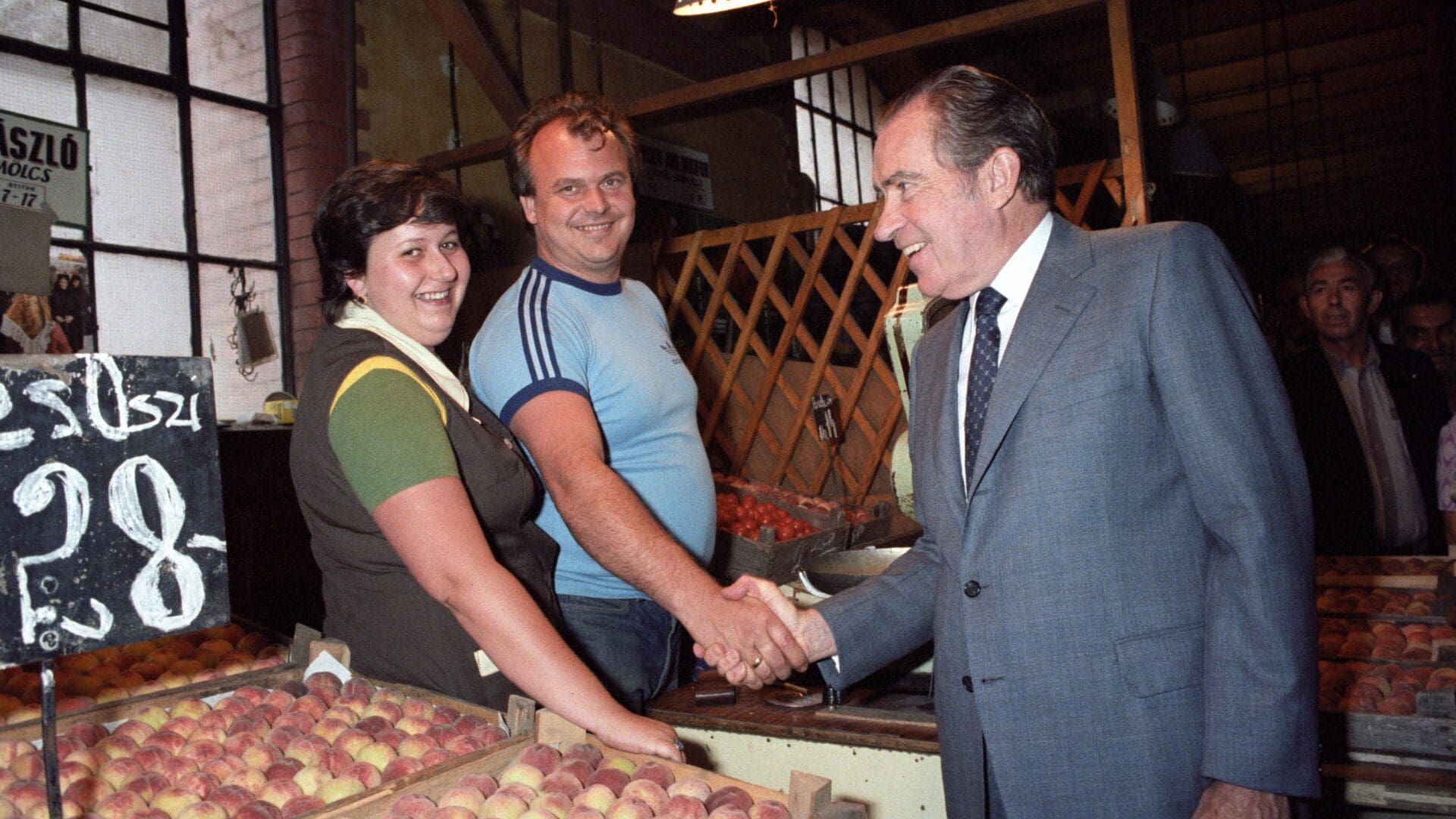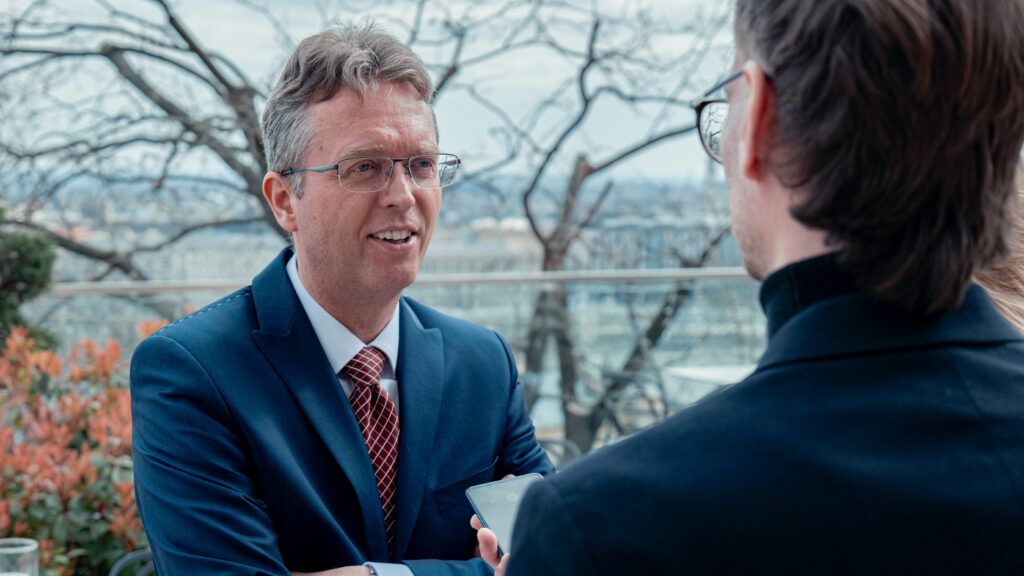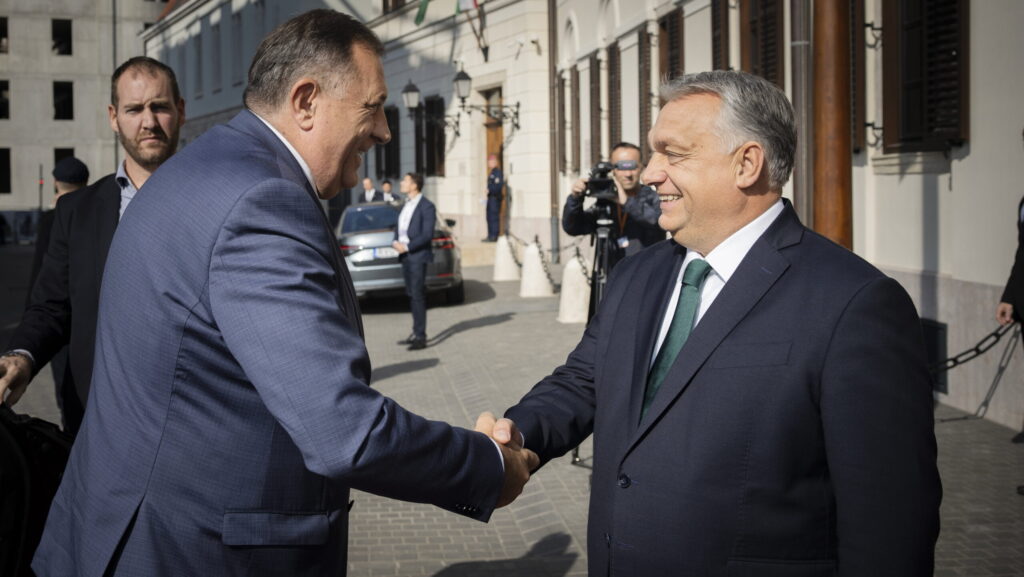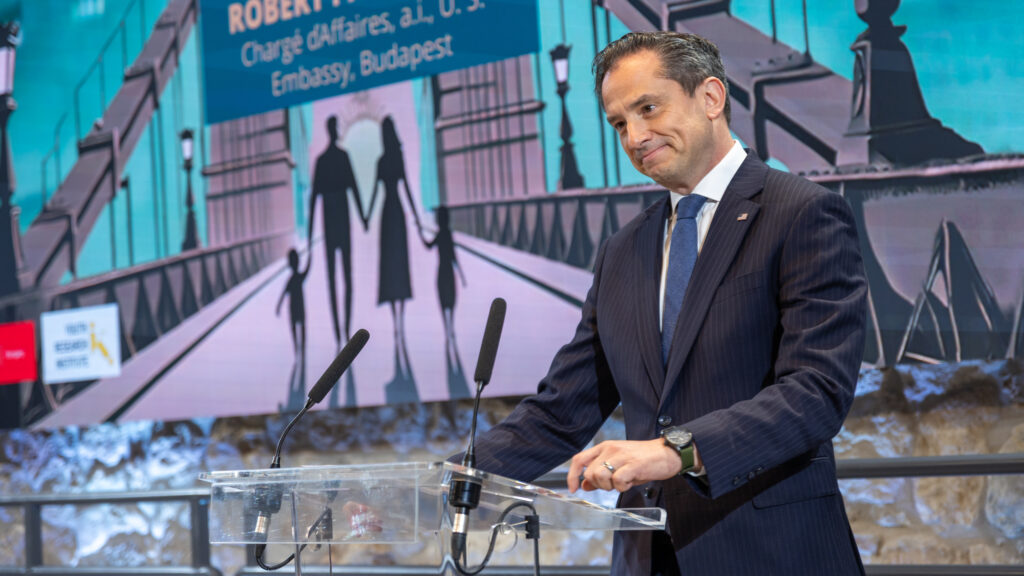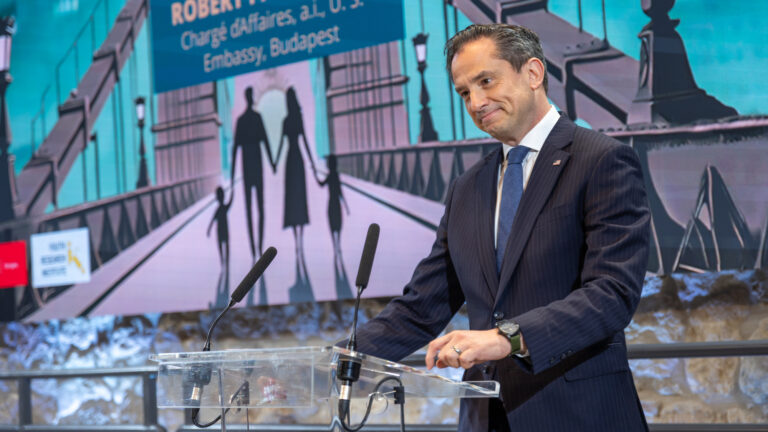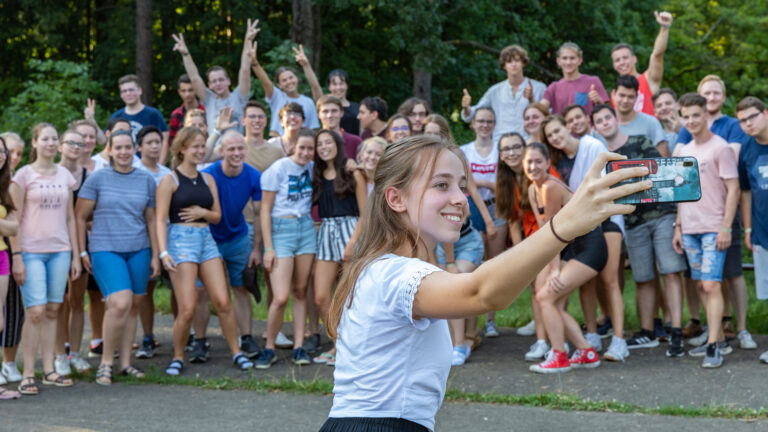The following is a translation of an article written by Barnabás Leimeiszter, originally published in Magyar Krónika.
In this article you can find exciting details and photos of the visits of sitting and former US Presidents to Hungary, including that by Richard Nixon, the President who had experienced exceptional highs and lows in his career.
A sitting American president visited Hungary for the first time in July 1989: it was George H.W. Bush who first made an appearance in the capital flushing with the excitement of the regime change. He held talks with the leaders of the State Party and the main representatives of the opposition and even had time to run a few laps in the sports complex in Pasarét. Upon his arrival, a TV programme titled Three Wishes (Három kívánság) and the US Embassy organised for him to be greeted by a little girl named Nikolett, who asked what the three things he wished for Hungarian children would be. Bush’s answer was
‘freedom, happiness, and a long life.’
(His words were slightly censored on television, mistranslated as ‘happiness, luck, and health’.) Then, in the summer of 2006, George Bush Jr also came to Budapest to pay tribute to the heroes of the Hungarian Revolution of 1956.
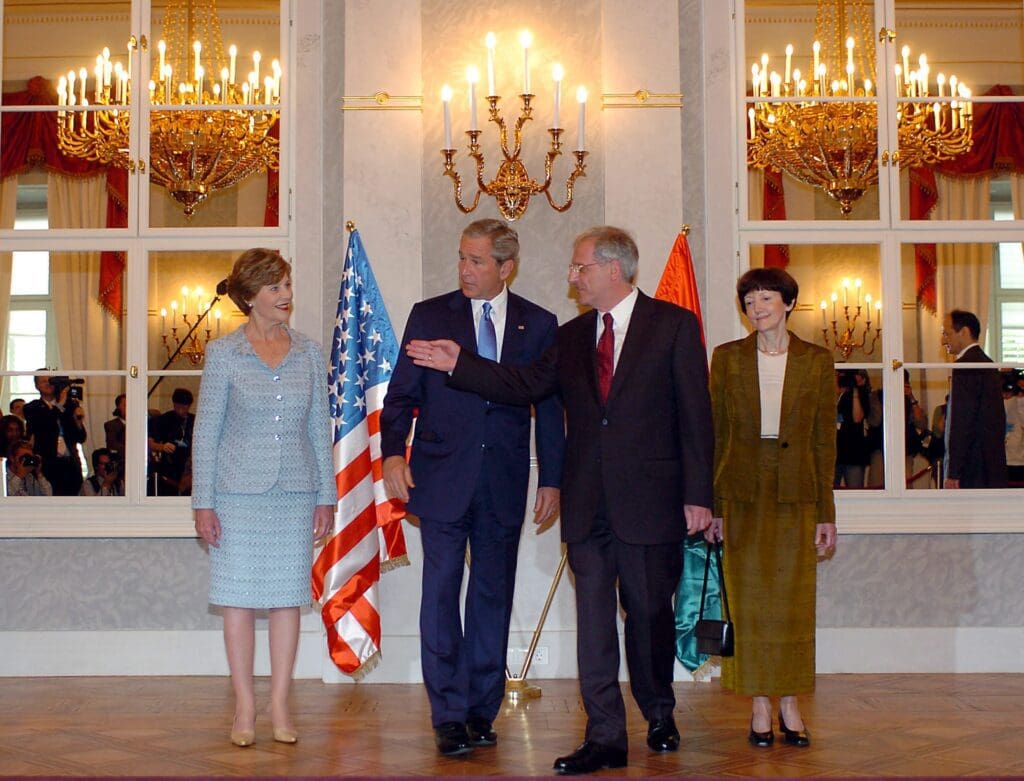
The list of American politicians who already left the White House by the time of their visit to Hungary or were elected only later is somewhat longer. During his European tour in 1910, for instance, Theodore Roosevelt visited our country as well: first, he stopped by Pozsony (today, Bratislava) and the aristocratic Apponyi Estate in Éberhárd (today’s Slovakia), and then Budapest, where he also met with the widely reputed Hungarian novelist Kálmán Mikszáth, the author of one of his favourite novels titled St Peter’s Umbrella. The Hungarian leaders pursued rather naïve fantasies at the time: they hoped that the ex-president, who spoke extremely flatteringly of the country during his visit, would spread Hungary’s reputation throughout the world and that if he came to power again, he would establish friendly relations with Budapest. However, they had to face bitter disappointment when, a few years later, Roosevelt—who otherwise advocated the entry of the United States into World War I—aggressively attacked the Central Powers, and thus the Austro–Hungarian Monarchy, in the press.
In 1977, a member of the US Senate Committee on Foreign Relations, Joe Biden, also travelled to Hungary, visiting Esztergom and Lake Balaton in addition to the capital. Shortly after his second marriage, Biden came back to our country together with his wife, for a sort of honeymoon. A photograph capturing Biden and his wife together with Hungarian-born Democratic politician Tom Lantos, the organiser of his trip, and his spouse on the panorama walk in Tihany was all over the Hungarian press in 2020, when Joe Biden was elected president. Biden’s trip, however, had an official purpose, too: he prepared a substantial report on the conditions in Hungary, which may have played a role in the decision regarding the return of the Holy Crown.
Former US President Richard Nixon visited our country twice
—for the first time, the Republican politician toured Europe with his family in 1963. At the time, Nixon was considered a politician who had failed multiple times: in the 1960 presidential election, he narrowly lost to John F. Kennedy as the incumbent vice president, and in 1962, he suffered a sensitive defeat in the California gubernatorial election. After these failures, he retired for a few years but never gave up his political ambitions. A few years ago, the Richard Nixon Presidential Library and Museum published exciting recordings on YouTube of Nixon’s visit to Budapest in 1963, during which he also admired the Fisherman’s Bastion, St Stephen’s Basilica, and the markets in Lehel (Élmunkás at the time) and Fény Street.
Nixon Family Films: Switzerland, Hungary, July 14-16, 1963
Silent film of the Nixon and Drown families in Switzerland (Jungfrau and Lake Lucerne) and Hungary (Budapest), July 14-16, 1963.
Nixon’s second trip to Budapest took place in July 1982. Since his previous visit, he had experienced such political heights and depths that have not been seen in American political history before or ever since. His comeback and electoral success in 1968 was a brilliant political achievement, which launched a peace process in Vietnam and initiated a policy of appeasement with the Soviet Union, but establishing relations with Beijing was also one of his diplomatic masterstrokes. He won the 1972 presidential election by the largest margin ever, but his second presidential term was mostly spent with the increasingly hopeless crisis management of the Watergate scandal, which forced him to resign in the summer of 1974. To this day, he is the only American president who had to leave office in this way.
After his disgraceful fall, Nixon had only one ambition left: to regain his respect as a kind of ‘elder statesman’, an experienced and highly knowledgeable former president whose word is trusted both in America and on the global political stage. His trip to Europe in 1982, when, in addition to Budapest, he also visited Paris and Bucharest, served this purpose, too. According to the brief Hungarian press reports of the time, the ex-president came to Budapest at the invitation of Foreign Minister Frigyes Puja and also held a meeting with the General Secretary of the Hungarian Socialist Workers’ Party János Kádár and other state leaders.
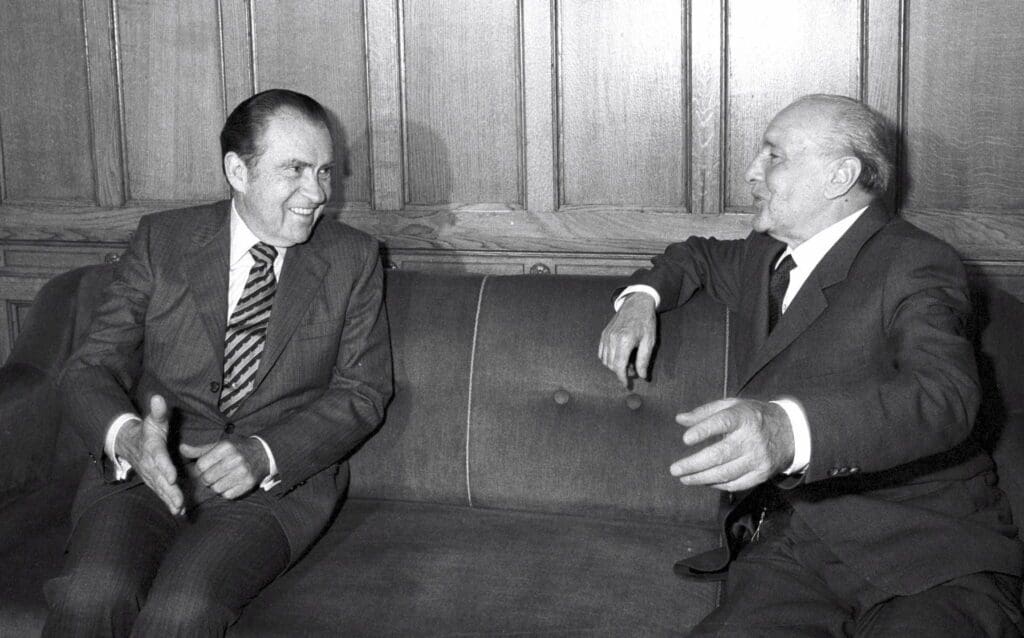
It was also documented in MTI photographs that Nixon also took a walk in Váci Street, where he signed autographs for passers-by. He did not miss the opportunity to wander around the Great Market Hall in Fővám Square either where he saw for himself the glut of Hungarian goods.
Click here to read the original article.

